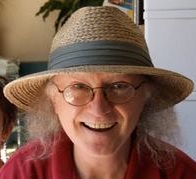1.3: Water, Water Everywhere
- Page ID
- 1658
Click here for Kevin's Introductory Lecture on Youtube
Vital for life, water is by far the most abundant component of every cell. To understand life, we must, therefore, understand the basics of water, because everything that happens in cells, even reactions buried deep inside enzymes, away from water, is influenced by water’s chemistry.
We start with simple properties. The molecule has a sort of wide ‘V’ shape (the H-O-H angle is 104°) with uneven sharing of electrons between the oxygen and the hydrogens. The hydrogens, as a result, are described as having a partial positive charge and the oxygen has a partial negative charge. These tiny partial charges allow the formation of what are described as hydrogen bonds, which occur when the partial positive charge of one atom is attracted to the partial negative of another. In water, that means the hydrogen of one water molecule will be attracted to the oxygen of another. Hydrogen bonds play essential roles in proteins, DNA, and RNA, as well, as we shall see.


